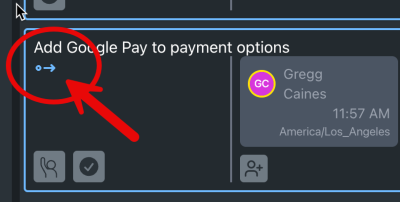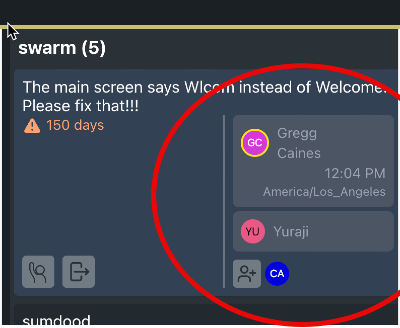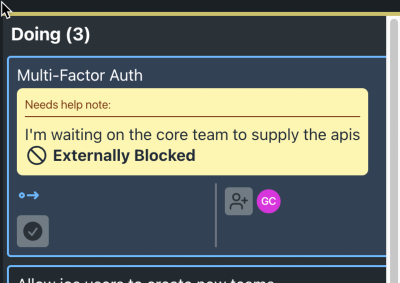Improving Stand-Ups with Basic Tooling
I recently wrote about how stand-up meetings have a huge productivity problem. Way too much time is spent on status updates that could simply be whisked away entirely with better tooling. Status updates can be valuable to the right people at the right time, but stand-ups almost never hit that sweet spot. People are just relentlessly bombarded with long drawn-out status updates that aren’t relevant to them so 15 minutes can zoom by without the team getting to the real point of the stand-up: coordinating the day ahead. Even if there was a useful minute in the whole thing, no one feels like the time spent getting to it was worthwhile.
Let’s look at the common “status update” format for stand-ups: What did you do yesterday? What will you do today? What is blocking your progress?
What did you do yesterday?
“Recently moved” annotation.

So what’s happened since yesterday? Well all the cards with the little blue arrow moved. Now you don’t need to remember what was accomplished or recite it back to the team. It’s all laid out for everyone to see at a glance.
What will you do today?
“Active” assignments.

If you’re working on multiple cards, the latest one you’ve joined (or rejoined) is marked as the active one, so you can show your team exactly which one you’re spending time on even if you’re still assigned to others. When your team has more detail on what exactly you’re doing there are more opportunities for them to collaborate and coordinate with you.
What is blocking your progress?
“External blockage” notes.

Add a note when your progress is blocked due to reasons that are beyond the team’s control. The sooner people communicate issues like this, the sooner everyone can make sure that the blockage is getting solved properly.
“Needs help” notes.

When you need help from anyone else on the team, add a note and mention them on it. It can be used to pull in expertise, code reviewers, or even just another pair of hands.
Continuity
The “daily” aspect of stand-ups is also one of the worst parts of it. Why can’t we be continuously up-to-date? Why can’t we be continuously coordinating? Why do we need to wait until the next day to learn about new progress, blockages, or opportunities to collaborate?
Better tooling makes that continuity possible as well. All the features above work all day long to keep the whole team up-to-date and informed continuously. There’s absolutely no reason we should have to wait for the next day for verbal status updates.
